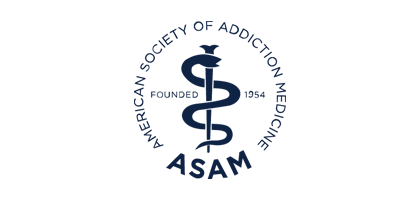Blog
One Addiction Doctor’s Experience with a New Payment Model- Direct Primary Care
While ASAM and other organizations continue to work toward parity and third party payment for addiction treatment, some physicians, myself included, are simplifying medical practice and eliminating third party payers from office based medicine. Direct Primary Care (DPC) is becoming more popular among physicians who feel overburdened by administrative hurdles in the current healthcare system. Ironically, my OBOT experience, and lack of third party payment for addiction services, strongly influenced my decision to start a DPC practice.
When I started prescribing buprenorphine in 2008, addiction treatment was not a covered service. In 2009, I approached my employer, a hospital, about increasing my panel of patients to 100, but they were not enthusiastic about me spending more time on care that was not reimbursed. Instead, I started working part time once a month for a direct pay (also called “cash pay”) addiction treatment provider in Kentucky. Although I enjoyed the work very much and helped countless people, I always felt that OBOT belonged in a primary care setting, where I could care for other medical problems and for the family members profoundly affected by my patients’ substance use disorders. After all, if we expect addiction to be recognized as a chronic illness similar to diabetes and hypertension, we should treat them similarly, in a primary care setting.
In 2012, I joined a Patient Centered Medical Home (PCMH) hoping that I might integrate OBOT into a primary care setting. Unfortunately, I was expected to see 30 patients a day, which left inadequate time with my patients. Within one year, I experienced severe burnout—spending more time entering “data” into an electronic medical record and trying to keep up with various, ever-changing formularies and rules from payers than actually caring for patients. I decided to look for another way to accomplish my goal of integrating OBOT into a primary care setting. Thankfully, several articles about Direct Primacy Care (DPC) started to appear in my email.
In 2014, I started Bluegrass Family Wellness and immediately started treating patients with opioid use disorder part time. Despite numerous regulatory hurdles and obstacles by payers in Kentucky, we continue to successfully treat patients with OBOT and in many cases, address their other medical problems in one location (Kentucky Medicaid rules make this impossible for Medicaid patients). Patients pay a reasonable monthly membership fee, which covers various services clearly outlined in a contract between the physician and the patient.
Unlike early concierge medicine practices, DPC practices charge affordable monthly membership fees and do not bill insurance for any services offered in the office. We also dispense medications (not controlled substances at this time) at wholesale prices and offer laboratory services for 75-80% less than the amount typically billed to third parties. While most payments come directly from patients, QLiance, a large DPC provider in Washington has contracted directly with employers and even Medicaid to offer this innovative model to thousands of people. Other states are adopting similar plans for state employees, including New Jersey and North Carolina. The results are encouraging, with 20-30% overall savings on healthcare costs.
Several states have passed DPC friendly legislation to facilitate direct contracting between physicians and patients. The laws stipulate that DPC is not insurance but healthcare and allows Medicaid patients to contract directly with DPC physicians to obtain care, including same day appointments, longer appointments, and access to a physician by text, email, and phone 7 days a week. On several occasions, I have saved a patient a trip to an urgent care center and hundreds of dollars by seeing him/her for strep pharyngitis on the weekend. Often, physicians ask me if patients abuse the 24/7 access to me, but actually they are extremely grateful to have excellent, affordable, accessible care and are apologetic if they contact me after hours. A direct pay setting is ideal for OBOT also, because I am able to build in contingency management and hopefully may soon be able to dispense buprenorphine, saving patients and the system even more money. Once a patient tapers to a very low dose of buprenorphine, I consider the patient strictly primary care, the buprenorphine dose true maintenance, and no longer charge extra for OBOT.
In order to continue to see Medicare patients, I opted out of accepting Medicare payments, which allows me to contract directly with the patient, while honoring my referrals to specialists, imaging orders, and prescriptions that I do not have in my inventory. I continue to encourage my patients to have insurance for expensive care, such as hospitalization, surgery, and emergency care, which is the true purpose of insurance—coverage of unexpected, expensive events, not routine care. Involving third parties in routine outpatient care increases the cost of healthcare and contributes to fraud and abuse. When I was working for the PCMH, I spent lots of time finding codes to improve reimbursement, and in order to get paid, I had to bring the patient into the office. Now, since I am paid ahead of time, many basic medical problems, such as the common cold, can be addressed over the phone or by telemedicine. Direct Primary Care has truly invigorated me. I am happy, my patients are ecstatic, and I have more time to work on advocacy around addiction and DPC. To other physicians, especially primary care physicians practicing OBOT, I encourage you to explore alternatives to the current system. When it comes to parity and convincing payers to cover addiction services, I say with caution “be careful what you wish for.”

